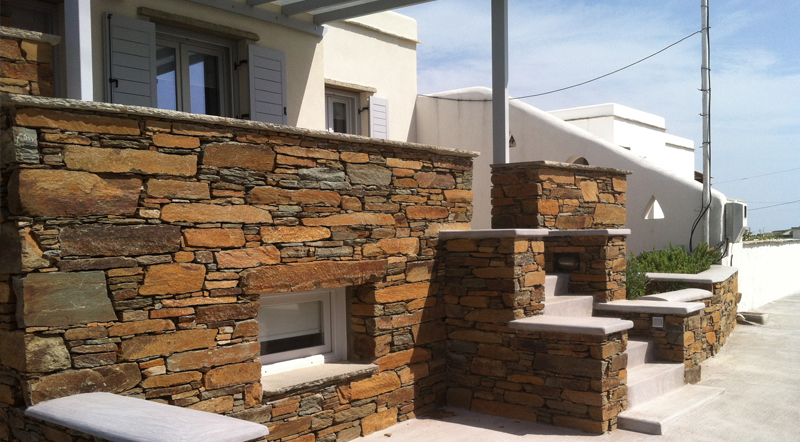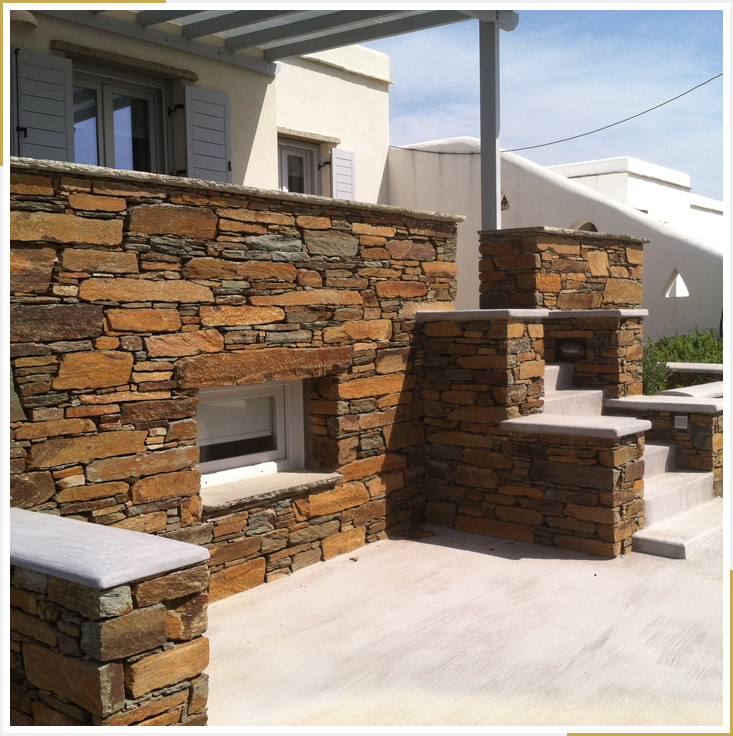
 The secrets of dry stone
The secrets of dry stone

One of the last "gems" reveals the secrets of the dry stone Mr. Yiannis Delatolas or Doulas, as his nickname, from the village of Smardakito, is 77 years old, has three children, six grandchildren but this does not stop him from continuing in the fields for work. He has about twenty goats to watch out for but also hens, rabbits, two "heifers," as they say little cows, many rabbits, sheep and a donkey. But it's not just his job. Mastro-Giannis continues to cultivate his boxing, and like an old stone-master of the stone-he continues to master when given the opportunity and when he finds a living.
We didn't reach him by accident. After all, it is a special case of craftsmen in Tinos, not only because it is one of the few remaining gems but because it is the one that worked for the restoration of 110 pigeons on the island in the traditional way, but also for the restoration of the stone blocks with a previously implemented LIFE program . This experience is a product of his love for craftsmanship and stone. "It was my food," he tells us. “But no master craftsman showed me art. I stole it with my own eye. The good builder must separate the right stone through the pile. Don't waste time tearing it down. I used to build up to five meters of wood per day, ”he says proudly. "With this skill I acquired I kept my family because agriculture and animals did not earn a living."
From Mr. Yiannis we learned the secrets of building a dry stone. We learned how difficult it is, because "if you don't put the stone in the right place it will cut and change the balance of the top. But even if you lose a point at the bottom you will lose 10 at the top in a tall building. " Also, we do not lay any dry stone in the soil. We have to clear the ground and find the rock. Of course, the soil in Tinos is "shallow" and you find a solid rock at 20 to 50 points. "Then we only start building when the foundation touches solid ground."
The stones for the dry stone are usually collected through the field itself. This is for two reasons: to clear the arable land and not to carry the stones from afar. This was a painful process, since they were carried in the hands or with the "wood carpenter" - a technique with cords, wood and the donkey's help.
The stones used on the foundations of the retaining stones were called "herbs". They had to be taller than the others and get into the soil of the back terrace. Only in this way were they solid. At all levels of the dry stone and at different distances there were 'stinging' stones. They anchored the wall to the ground and acted as nails that provided greater stability. All the other smaller stones used were called "runners" because they were the ones seen on the facade.
But this terminology, like the art of dry stone restoration, is in danger of being lost today. Mastro-Giannis is one of the last gems of Tinos. Hope comes from Albanian immigrants who, even if they do not know the art of stone, are willing to learn it so that they can preserve an important part of our traditional architecture, which is also their own tradition.
Shelter for vines and figs!
The vine and the fig tree were difficult to catch in the climatic conditions of Tinos because in the first five years, until the plants developed a strong root system, they needed moisture that was difficult to secure in the dry and hot summer months and naturally protected from the strong ones. northerners. At the base of the foundations of a new stone, they dug the stones at the bottom, creating ditches, the "tapadours" as they are called in Tinos, and placing the stalks from the vine or fig tree branch, in order not to crush them from the the weight of the stones. There, with the help of moisture and nutrients from the fresh surface soil transported to the base of the new dry stone - a standard technique to replenish soil and help new plants - the plant could survive the difficult first few years.
Ideal for hives!
When a housewife wanted to produce her own honey she made a special case in the dry stone for the bees. These were called beeswaxes or beesworms, as Maastro-Yannis of the Tinos Emerald told us. To make beehives they had to place "a candle on the right and one on the left," that is, one-piece stones on either side at a distance of about sixty points, and another large one-piece ceiling stone. Above the roof they continued the regular construction of the dry stone. The bee-hole was one-and-a-half meters deep, that is, much larger than the dry stone, which reaches about fifty points, and as you can see, most of it fell into the earth.
In this slot they placed a clay hive and closed it with a stone that they could lay and pull out comfortably. The height of each hive was also important because it did not have to enter the water or get too much heat and of course the snow did not nest in the mountains. During our walk in Tinos, Mastro-Yiannis did not stop wondering: how can bees withstand today's colorful wooden hives with such high temperatures? "Inside the stone hives of the rocks, the conditions were perfect."
Source: www.tinos360.gr